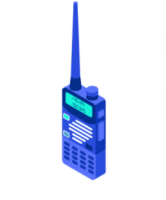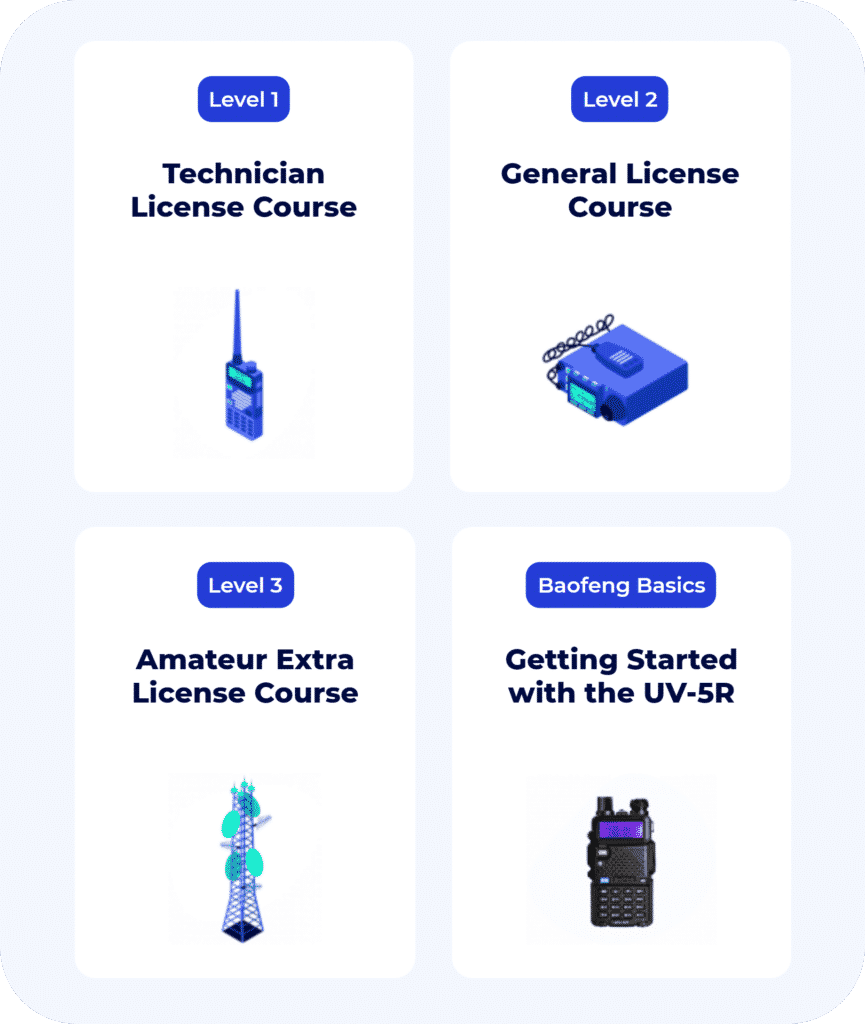What’s the best handheld ham radio for a new ham? We’ll review the 5 best options.
One of the top questions we see online is, “I’m a new ham, what radio should I buy?” The answer really depends on what part of the hobby you are going to explore, but you can’t go wrong with having a good handheld, also known as an HT, in your tool kit.
The whole team at Ham Radio Prep took a look at all the major handheld options and came up with the 5 best options out there, considering price, functionality, modes of operation, and things like community support.
We have not been compensated or sponsored by any of these brands. These are just our honest reviews of our favorite five radios.
So let’s jump in with a good low priced option.
Top 5 Handheld Ham Radios in 2023
1. Baofeng BF-F8HPLow Priced
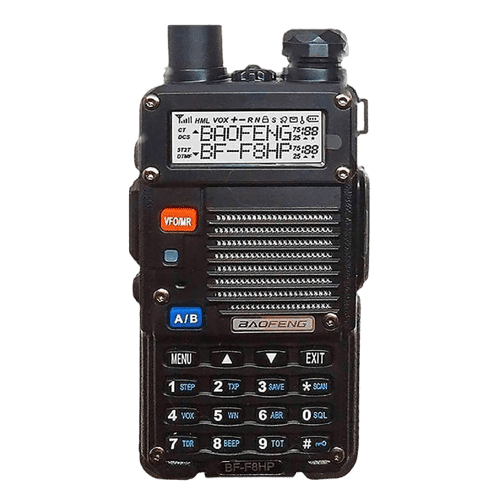
Estimated Price: ≈ $40 - 70
The Baofeng BF-F8HP is the first entry on our list; it is a great affordable, entry level option, selling online for around $70. There are lower priced radios on the market, but this made our pick due to a higher 8 watt power output instead of the typical 5 watts and a bigger battery capacity than the others.
This radio allows you to transmit on 2 Meters and 70 Centimeter bands, and has some additional receive only bandwidth so you can hear FM broadcast, the weather service, and GMRS while scanning. With this radio you can expect to work simplex contacts in the 5 mile range and hit local repeaters in town to give your signal even longer reach.
It’s a good choice to add a programming cable as well, it’s so much easier to program memories on a computer than on the front panel, but the keypad is helpful for dialing in simplex frequencies or sending DTMF to activate Echolink or IRLP functions.
Because of their price points, the Baofengs are very popular ham radios, and it’s hard to go wrong here. Even experienced hams often have one lying around, in their truck, or a part of a go kit.
If you need to learn how to use your Baofeng, check out the Ham Radio Prep Baofeng Basics course.
Reasons to get the BF-F8HP:
- Solid battery life
- Affordable
- Larger 8 Watt output power than previous generation UV5R
- Works on popular 2-meter and 70cm bands
- Dual band / multi channel operation
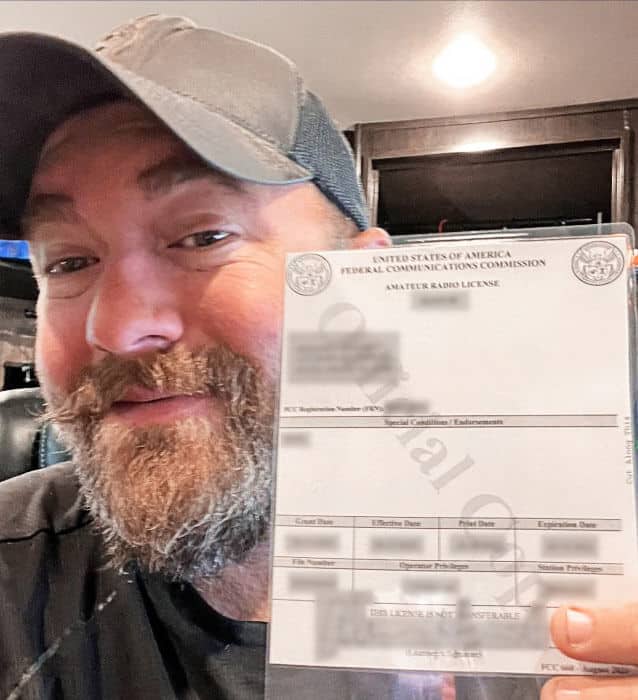
Take a free 5-minute lesson to take the first step to getting licensed.

2. Yaesu FT-65 Rugged Basic
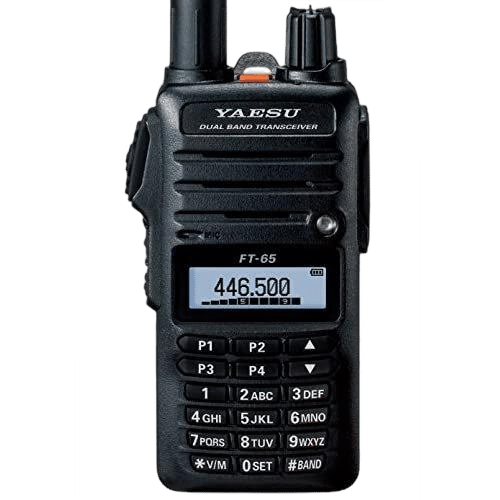
Estimated Price: ≈ $80 - 140
If you’re looking for a handheld radio that is a little more rugged, we continue to like the Yaesu FT-65. For around $120 you get a lot of similar features to the Baofeng, like 2 meter and 70 centimeter operation with monitoring options, but in a case and experience that is a little more hardened. Yaesu radios are well supported from our experience and have a few more accessory options.
The FT-65 is one of only 2 radios on our list that has a single VFO, meaning you can only listen to one frequency at a time unless you are scanning. That’s a good trade for the ease of use and durability you may find important in a handheld. Like the Baofeng, we recommend picking up a programming cable to enter your repeater memories.
Reasons to get the FT-65:
- Affordable
- Good battery life
- Rugged design
- Ease of use
- Well supported
3. Icom ID-52Go Digital - D-STAR
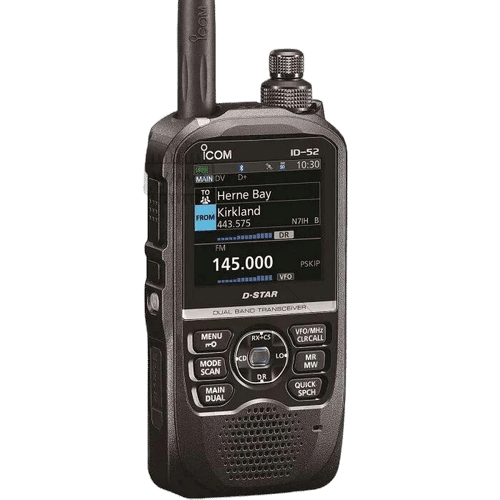
Estimated Price: ≈ $600
While we recommend starting your operating experience with analog, lots of hams want to buy a radio that will grow with them, so we’ll give our picks for a top radio in each of the three most popular digital formats. We’ll touch on Fusion and DMR shortly, but let’s start with D-STAR and the Icom ID-52.
Icom has been focused on D-STAR for more than a decade and they continue to build out their radios as features come available.
The ID-52 is loaded with options, and you can find them on sale for less than $600. It compares well with the Baofeng and Yaseu in analog features. It also adds a broader receiver range, bringing in the civil aviation band and some mil-com aviation frequencies. It still focuses its transmit on 2 Meter and 70 centimeter which are the most popular frequencies for D-STAR repeaters.
To get started on D-STAR the radio features something called DR mode. This feature lets you download a GPS searchable list of repeaters into your radio, which is separate from its 1,000 memory slots. With DR mode you can select a repeater from the list, or choose “near repeater” to pick the closest options. The DR mode works on both FM and D-STAR repeaters, making it a dream to program.
The ID-52 has a broad set of features you would expect from a more expensive handheld, including a nice big color screen; Bluetooth functions that add the ability to import and transmit photos over D-STAR, onboard recording of your transmissions, and it is all programmed with a standard Micro USB cable to switchable Micro SD card memory. Icom offers plenty of accessories as well.
This top of the line D-STAR radio would make an excellent choice if that digital mode is where you want to focus. Our honorable mention here is the Kenwood TH-D74A. It’s gone out of production but you can still find it on auction sites. It’s the only radio we know that does D-STAR with DR mode and APRS in one rig, and it also has coverage on the 1.25 Meter Ham band.
Reasons to get the Icom ID-52:
- D-STAR with DR mode
- Amazing user interface
- Great built-in speaker
- Great range for power usage
- Bluetooth and GPS functionality
- Rugged and IPX7 WaterProof Rating
- Micro USB connectivity
- Civil and Military air reception
- Swappable MicroSD memory
4. Anytone AT-D878UVII PlusGo Digital - DMR
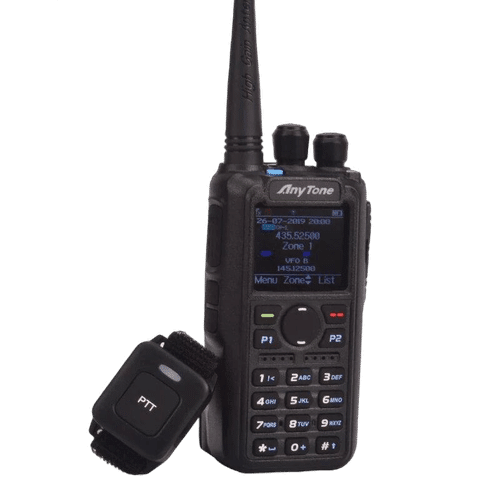
Estimated Price: ≈ $315
Let’s switch from D-Star to DMR and look at the Anytone AT-D878UVII Plus. Our team agrees that going from zero to DMR is probably the most complicated path in terms of programming your radio and getting started on digital, but this radio has our choice because it has broad support.
For about $320 you can pick up the basic radio which includes a 7 Watt transmitter on 2 Meters and 70 Centimeters. It has a big color screen, built in GPS and is another on our list that does APRS. The ones we have seen come with a programming cable in the box, and this odd push to talk wristband which seems to be a throw-in.
The Anytone has one of the largest memories with 4,000 channels which is great when traveling. It does not have the receive bandwidth of FM broadcast and airband like a couple of the others we have discussed, but it’s a solid, well built rig with accessory options, because it is cross compatible with “Kenwood” style accessories.
Getting started on DMR is a whole other series of videos so we won’t cover that here, but to do that you will need something called a “code plug” that contains the right memory configurations. If you don’t have a friend that can share, consider one of the commercial vendors that will sell you a custom code plug along with the radio. It could save a lot of frustration getting started.
Reasons to get the Anytone 878:
- DMR
- Color screen
- Large on-board memory capacity (500,000 DMR Contacts)
- Great Bluetooth support
- GPS & APRS support
5. Yaesu OptionsGo Digital - Fusion
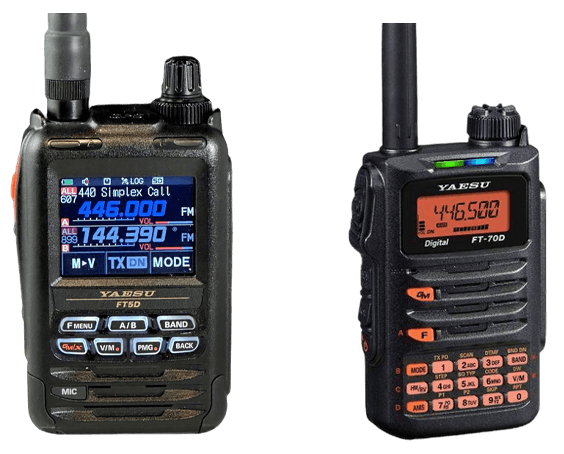
Estimated Price Range for FT70 DR: ≈ $170 - 220
Estimated Price Range FT5DR: ≈ $400 - 550
For our System Fusion option of digital radio we have two choices –
the FT-70 DR or the FT5DR.
We like the FD-70DR because of its great price point for a digital radio, around $200 and its no-nonsense approach. It’s a single VFO with an LCD screen that can receive from 108 Megahertz Airband all the way up to 580 Megahertz in the public service band. The multi-colored LED shows if you are in Analog or Digital mode at a glance and has more than 1,000 memory channels.
The FD-70’s more full featured Big Brother is the new FT5DR. It sells for less than $500 but that’s a little misleading because it requires a programming cable for any serious setup, and that’s an add-on which you don’t have to worry about if you pick our D-STAR or DMR choices.
Once you get going the C4FM mode, also known as Fusion, seems to be easier to get started with than DMR since it’s more repeater dependent. The FT5DR has a big touch screen and the accessories we expect like spare batteries available as well, and also has swappable Micro SD memory.
Reasons to get the FT-70 DR:
- System Fusion
- Great build quality
- Solid out-of-box antenna
- Great audio quality
- Programming cable included, and easy to program and use.
- Good price
Reasons to get the FT-5DR:
- Great color display and user interface
- System Fusion
- Crisp audio quality
- IPX7 waterproofing
- Out-of-box Wires-X/ C4FM support
- Allows for dual band operation
- Swappable MicroSD memory
Which Digital Should I Choose?
Ultimately, the choice in Digital boils down to availability.
According to a November 2022 check of RepeaterBook.com in North America there are more than 2,100 DMR repeaters, about 1,200 D-STAR options and around 2,300 Fusion repeaters.
That said, we recommend checking 2 things before going all in on a digital format. First, what’s in your neighborhood. The easiest digital format to get started on is what’s on the repeater up the street, you can usually find a local club to help with questions when you get started. So check repeaters in your area and find out if DMR, D-Star, or Fusion is more popular if you want to go digital.
Second, if you plan to work with a group, know their preferred digital format. For instance, Georgia ARES is focused on a statewide D-STAR network, and that is not cross compatible with Fusion or DMR. The point here is there is no standard for what different formats local clubs and groups like ARES around the country use. Talk with them locally before you invest a lot of money into a radio if your plan is to join up and support them.
Conclusion
Whichever handheld you choose, or if you choose another one not on our list, expect a learning curve on getting the radio programmed for the first time. You’ll be back in a world of choosing COM ports on your computer or swapping memory cards. Again, check your local club for repeater memories or code plug files, lots of hams are willing to share.
If you like the idea of having a handheld ham radio, but haven’t gotten your license yet you can get started with our 10 lesson Technician course that has videos, quizzes and games to teach you everything you need to pass the FCC exam on the first try.





